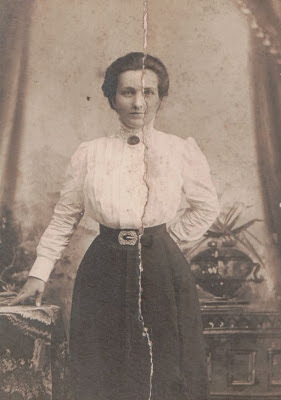This week’s Sepia Saturday photo of the Wombeyan Caves in
New South Wales suggests caverns, caves, and grottos.
 |
| Fred Slade 1948 St. Bernard's College, Cullman, Alabama |
My dad’s first college experience was in 1948 at St. Bernard, a small Catholic college in Cullman, Alabama. Daddy threw himself into his studies. He often reflected on how much he enjoyed discussions of philosophy, literature, and religion with the Benedictine brothers who taught there.
 |
| Fred Slade catching some rays while studying |
Somewhere between studying, playing intramural basketball, and serving as a class officer, Daddy made time to visit the world-renown Ave Maria Grotto there on campus. It was one of his favorite places.
This landscaped 4-acre park is in an old quarry located on the grounds of St. Bernard Abbey. It contains 125 miniature reproductions of the world’s most famous religious buildings.
Most of them are Roman Catholic cathedrals and monasteries like St. Peter’s Basilica, Montserrat Abbey, Carmel Mission in California, and Sanctuary of Our Lady of Lourdes. Also there are scenes of ancient Jerusalem, Noah’s Ark, and Tower of Babel.
The Ave Maria Grotto has been called "a sermon in stone."
 |
| Basilica of St. Paul postcard produced by W. M. Cline Co, Chattanooga, Tennessee |
 |
| Temple of Jerusalem and Some Buildings of the Palestinian Miniatures |
But there are secular tributes, too, including the Alamo, Leaning Tower of Pisa, Hansel & Gretel’s Temple of the Fairies, and German Castles. There is even a miniature of the St. Bernard Abbey power station.
Maybe Daddy took Granny to see the Ave Maria Grotto when
she visited him in October 1948. She
sent this colorful postcard of the Grotto home to Granddaddy.
 |
| Temple of Jerusalem and Some Buildings of the Palestinian Miniatures On the back: Genuine Curteich-Chicago "C.T. Art-Colortone" Post Card |
Sunday
Hello Dear
Having a wonderful time.
Sure wish you were here. Leaving
tomorrow AM. Hope to see you Tuesday.
Love
Julia
 |
| Collage of Ave Maria Grotto scanned from The Bernardian 1949 Click to enlarge |
The Grotto was the result of a 50-year hobby by Brother Joseph Zoettl, one of the brothers at St. Bernard. It opened to the public in 1934 and Brother Joe added his last building in 1959.
Brother Joe’s art was a model of recycling practices
before recycling was cool. He began the
grotto with some marble that had been crushed when a train derailed in 1933 not
far from Cullman. The buildings were adorned
with marbles, glass, broken tile, toothpaste caps, seashells, costume jewelry,
and even toilet bowl floats. Needless to
say, the miniatures are quite detailed, albeit not always accurate or to
scale.
The work of Brother Joseph Zoettl is the subject of a documentary that will air sometime in the fall of this year. He has been compared to St. Thérèse of Lisieux and St. Francis of Assisi, both of whom led small and quiet lives that have inspired others with their emphasis on simplicity.
It is quite possible that Daddy might have met Brother Joe
since he lived at St. Bernard from 1892 until his death in 1961.
Here is one of many tours of the Ave Maria Grotto available on YouTube. (Do yourself a favor and turn the sound OFF.)
Grab a flashlight and visit more caves, caverns, and maybe some grottos at Sepia Saturday.


























